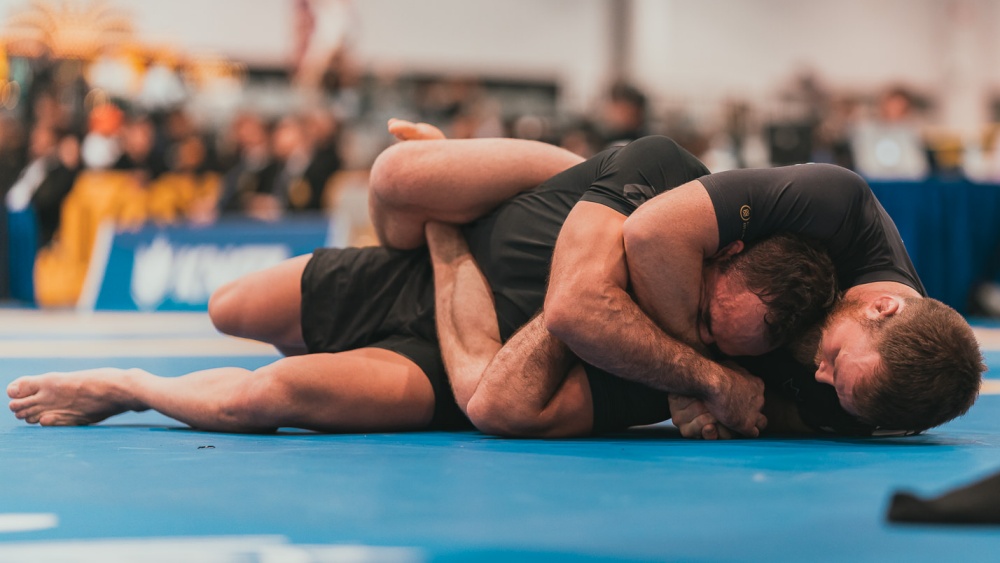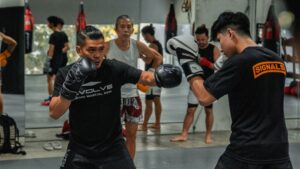In all types of combat sports, angles are used as a strategy to get to a dominant position. In a grappling-heavy sport like BJJ, leveraging angles is one of the most important things.
You use angles to set up a takedown. You use angles on the ground while you work your passes, guards, and attacks. Angles also make submissions tighter, thereby making them more effective. Understanding how angles work will make you a better grappler.
In this article, we will teach you how to use angles to improve your overall game.
Angles In BJJ
Angles are important because a good body position relative to your opponents is what BJJ is all about. Typically, it is harder to fight an opponent straight on as it allows them to anticipate your attacks and react better defensively.
The ideal way to engage in BJJ is to enter at an angle to force the opponent to respond diagonally. Moving at an angle to target weak points is a concept that applies in all forms of martial arts. While it may be challenging to create angles against an alert and resisting opponent, setting it up by creating distance, applying grips, using tactics, and even using your physical attributes will always go a long way.
Using Angles In The Standup
Let’s first discuss angles from the standup. All matches start from the standup. It is imperative that you use angles to gain an advantage over your opponent.
Moving at an angle before you shoot for a takedown is always a good idea. Takedowns from the front may sometimes work, but experienced opponents will likely have counterattacks prepared. Working with collar ties and moving around to create an angle as you execute a takedown will leave the opponent with fewer options to defend. It also leaves them more vulnerable to attacks, basically catching them off guard, thus making your takedown more efficient.
Using Angles To Pass The Guard
On the ground, angles can be used to set up a pass. It can be done by misdirecting the opponent’s body as you move diagonally. Usually, it is difficult and can be problematic to pass an experienced grappler’s open guard if you go straight to their guard looking to pass.
Experienced grapplers will constantly follow the direction of your body as they use frames and hip movement to stay safe. Tackling a strong guard head-on is not a smart move. Chances are you’ll get swept or even submitted if you are directly in front of your opponent.
To effectively create an angle on the ground, you must first control the distance and misdirect the opponent’s body. The toreando pass is one example of a guard pass that allows you to misdirect the opponent’s body, particularly the legs, by moving it forward, backward, or to the side as you move around the guard.
As shown in the video by the great Keenan Cornelius, the toreando pass is executed by gripping and controlling the opponent’s pants near the shin area. This grip is critical as it gives you a lot of control. The grip allows you to use the steering wheel maneuver, which moves the legs and body to the side. From here, it becomes effortless to pass the legs and secure the guard pass.
Importance Of Angles In Finishing Submissions
Angles make submissions more effective. It makes chokes tighter and harder for opponents to escape. Let’s use the triangle choke as an example.
The typical and most basic way grapplers finish the front triangle is by pulling the opponent’s head down as they push their body away while bridging and tightening the figure four. Though they can still apply an armbar as a follow-up to the triangle, a physically strong opponent can pick them up and slam them on the mat. Not a very technical counter but works surprisingly well.
Not only can angles make the triangle tighter, but they can also prevent the slam from occurring. By angling to the side and underhooking the opponent’s opposite leg, you can prevent the opponent from standing up because you are anchoring them down using your weight. You can finish with the triangle choke.
Alternatively, you can transition to the armbar while maintaining the underhook. If your opponent still picks you up, let go of the underhook and reset your position. You may not have finished with a submission, but at least you are safe.
Using Angles When Playing Guard
Let’s use the closed guard as an example. If the opponent is trapped inside your closed guard, the chances of them attacking you back are very small. The closed guard is a confining type of guard; therefore, the first step for your opponent is to open the guard and attempt to pass.
In the closed guard, you want to force the opponent to the side instead of facing them straight on. Creating an angle in the closed guard makes it easier to apply sweeps, submissions, or transition to a more dominant position like the back.
In this video, Stephan Kesting shows that you can easily angle out from the closed guard by opening your legs and doing a bicycle kick as you turn to the side. The first step is to open your closed guard and do a bicycle kick to create space.
Next, lift your hip off the mat and turn to the side. Different attacking sequences can be applied from here, such as transitioning to the side guard. You can also hunt various submissions like the omoplata, triangle, and armbar.
Another way to create an angle in the closed guard is to get a sleeve grip and push the opponent’s arms to the side to make space. Doing so will allow you to move to the opposite side and reach for their lat and possibly take the back.
Final Thoughts
Leveraging angles in BJJ will give you many opportunities to attack. It can tighten submissions, make you more mobile as you move to different positions, and will generally make you a trickier grappler to deal with. Remember to do your basic Jiu-Jitsu drills as you study concepts on proper angling. These drills will make it easier for you to move and help you better understand how to use your body to create and limit space.
You may also like:

















